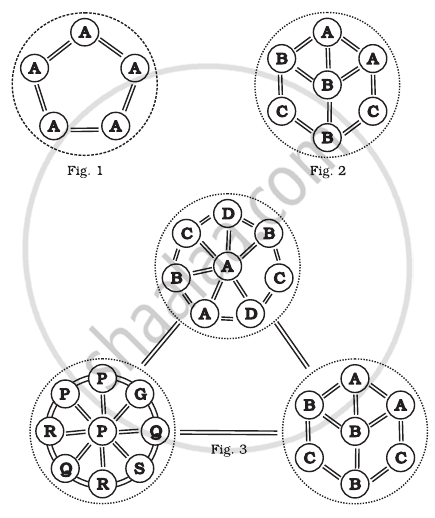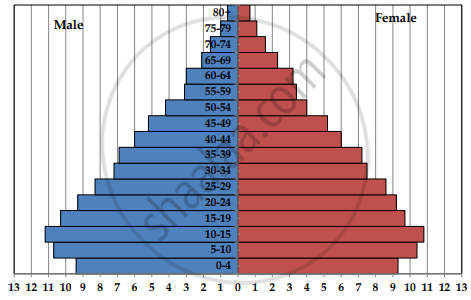Advertisements
Advertisements
प्रश्न
The following diagrams are the age pyramids of different populations. Comment on the status of these populations.

उत्तर
Fig.A: It is a ‘pyramid’ shaped age pyramid. In this figure, the base i.e pre- reproductive stage is very large when compared with the reproductive and past reproductive stages of the population. This type of age structure indicates that the population would increase rapidly.
Fig.B: It is an ‘inverted bell’ shaped pyramid. In this figure, the pre-reproductive and reproductive stages are the same. This type of age structure indicates that the population is stable.
Fig.C: It is ‘Urn’ shaped pyramid. In this figure, the pre-reproductive and reproductive stages are less than the post-reproductive stage of this population. In this population more older people are present. This type of age structure indicates that the population definitely is declining.
APPEARS IN
संबंधित प्रश्न
Construct an age pyramid which reflects a stable growth status of human population.
Represent diagrammatically three kinds of age-pyramids for human populations.
List the attributes that populations but not individuals possess.
What is an age-pyramid?
Mention the different ways by which the population density of different species can be measured.
Measures of ‘Central tendency’ refer to:
Nutrient enrichment of water body result.
Comment on the following figures: 1, 2 and 3:
A, B, C. D, G, P, Q, R, S are species

Given below is the Age Pyramid of the population in one of the states in India as per 2011 census. It depicts the male population on the left-hand side, female population on the right-hand side, newborns towards the base and gradually increasing age groups as we move from base to the top, with the oldest population at the top. Study this pyramid and comment upon the appropriateness of the Assertion and the Reason.

Percentage to the total population
Assertion: It is a stable population.
Reason: The pre-reproductive and reproductive individuals are almost in equal numbers and the post-reproductive individuals are relatively fewer.
What would be the best method to measure the total population density of a dense bacterial culture in a petridish and why?
